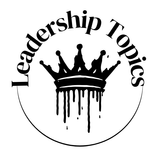How Some Leaders Use Emotional Intelligence to Manipulate Teams
Toxic leaders misuse emotional intelligence to manipulate, control, and exploit teams. Discover key red flags of emotional manipulation in the workplace and how to protect yourself from toxic leadership.

In the modern workplace, emotional intelligence (EI) is frequently hailed as a critical leadership trait. Leaders with high emotional intelligence are often seen as empathetic, excellent communicators, and skilled at navigating interpersonal relationships. However, like any skill, EI can be misused. Some leaders twist these traits for personal gain, using emotional manipulation to control and exploit their teams.
While emotional intelligence can foster collaboration, trust, and a positive work environment, it can also become a weapon in the wrong hands. When leaders use EI to manipulate rather than uplift, their tactics can be hard to spot but have devastating effects on employee morale and organizational culture. The key question is: how can we differentiate between a leader who authentically supports their team and one who is using emotional intelligence for manipulation?
The Dark Side of Emotional Intelligence
At its essence, emotional intelligence involves understanding and managing one’s own emotions, as well as those of others. Leaders with high EI can create environments of psychological safety, where employees feel supported, heard, and valued. However, these same skills can also enable toxic leaders to manipulate emotions to serve their own interests.
In such cases, EI turns into a tool for control. Toxic leaders will masterfully read the emotions of their team members, manipulating them into compliance. They may appear warm and supportive, but beneath this facade lies a self-serving agenda—often one that prioritizes their power and influence over the well-being of the team. These leaders may suppress dissent, control outcomes, and create an atmosphere of fear and confusion, all while maintaining the appearance of emotional care.
Manipulation in Disguise
Toxic leaders adept at emotional manipulation often mask their behavior behind empathy and concern. They might ask personal questions, pretending to be invested in their employees' well-being, only to exploit that information later. By fostering a false sense of closeness, these leaders keep employees loyal, compliant, and less likely to question authority.
One common tactic is weaponizing empathy. A toxic leader may offer support during a difficult time for an employee but later use that vulnerability to manipulate or guilt them into doing something. For instance, they may remind the employee of past favors to discourage dissent or reinforce compliance. This tactic erodes trust and creates an environment where employees feel emotionally trapped.
Additionally, toxic leaders often shift their behavior to control their teams. They may oscillate between warmth and coldness to signal approval or disapproval, keeping employees constantly on edge. By controlling emotional cues, they maintain a power imbalance that forces employees to seek validation while suppressing their own needs.
Recognizing Emotional Exploitation
Recognizing toxic leadership can be challenging, especially when the manipulation is subtle. However, there are red flags that can help employees identify when emotional intelligence is being used as a weapon:
- Inconsistent behavior: Genuine leaders are consistent in their actions, offering empathy and support across different situations. Toxic leaders, however, may display erratic behavior, using emotional warmth selectively based on their needs.
- Emotional manipulation: If you notice that your emotions are being manipulated to serve someone else’s agenda, you are likely dealing with a toxic leader. They may use guilt, fear, or emotional blackmail to control you.
- Dependence on approval: Healthy leaders empower employees to be confident and independent in their roles. Toxic leaders, on the other hand, create relationships of dependence, where employees feel they need the leader's approval to move forward.
- Lack of transparency: Authentic leaders communicate openly, ensuring that employees know where they stand. Manipulative leaders, however, rely on vague emotional cues, keeping employees in the dark and fostering uncertainty.
- Absence of psychological safety: Authentic leadership is characterized by environments where employees feel safe to express their ideas and concerns. In toxic workplaces, employees feel anxious, fearful, and hesitant to speak up due to potential backlash.
The Consequences of Emotional Manipulation
When emotional intelligence is used to control and exploit, it leads to a range of negative outcomes for both employees and the organization. Employees working under manipulative leaders often feel drained, confused, and disconnected from their work. Over time, this can lead to burnout, high turnover, and a toxic workplace culture where creativity and innovation are stifled.
The organization also suffers. Teams under manipulative leadership may become less productive, focusing more on managing the leader’s emotions than achieving actual goals. The climate of fear and manipulation can suppress creativity, reduce innovation, and ultimately harm the company’s ability to grow and compete in the market.
Protecting Yourself from Manipulative Leadership
If you suspect that your leader is using emotional manipulation to control you or your team, it’s crucial to take steps to protect yourself. Begin by recognizing the behavior for what it is—manipulation, not genuine care. Once identified, establish clear boundaries around your interactions, both emotional and professional.
Limit the personal information you share, and keep interactions focused on work-related topics. Seek support from trusted colleagues or mentors who can offer perspective and advice. Toxic leaders often attempt to isolate their employees, so having a support system is essential for regaining clarity and confidence. If the behavior persists, it may be necessary to escalate the issue to HR or higher management, especially if it affects your well-being or performance.
Striking the Balance: Emotional Intelligence with Integrity
While emotional intelligence is a powerful tool, its true value lies in how it is used. Authentic leaders leverage EI to build trust, empower their teams, and foster collaboration. These leaders are genuinely invested in the well-being of their employees, creating a positive work environment where everyone can thrive.
The key difference between authentic leadership and manipulation is intent. Authentic leaders use emotional intelligence to uplift and support, while toxic leaders use it to control and exploit. By learning to recognize red flags and setting boundaries, employees can protect themselves from manipulative leadership and seek workplaces where emotional intelligence is used ethically and responsibly.
The Leadership Topics
ART Walkway Highlights
For the latest trends in the art world, visit our sister magazine for in-depth features and exclusive insights:














